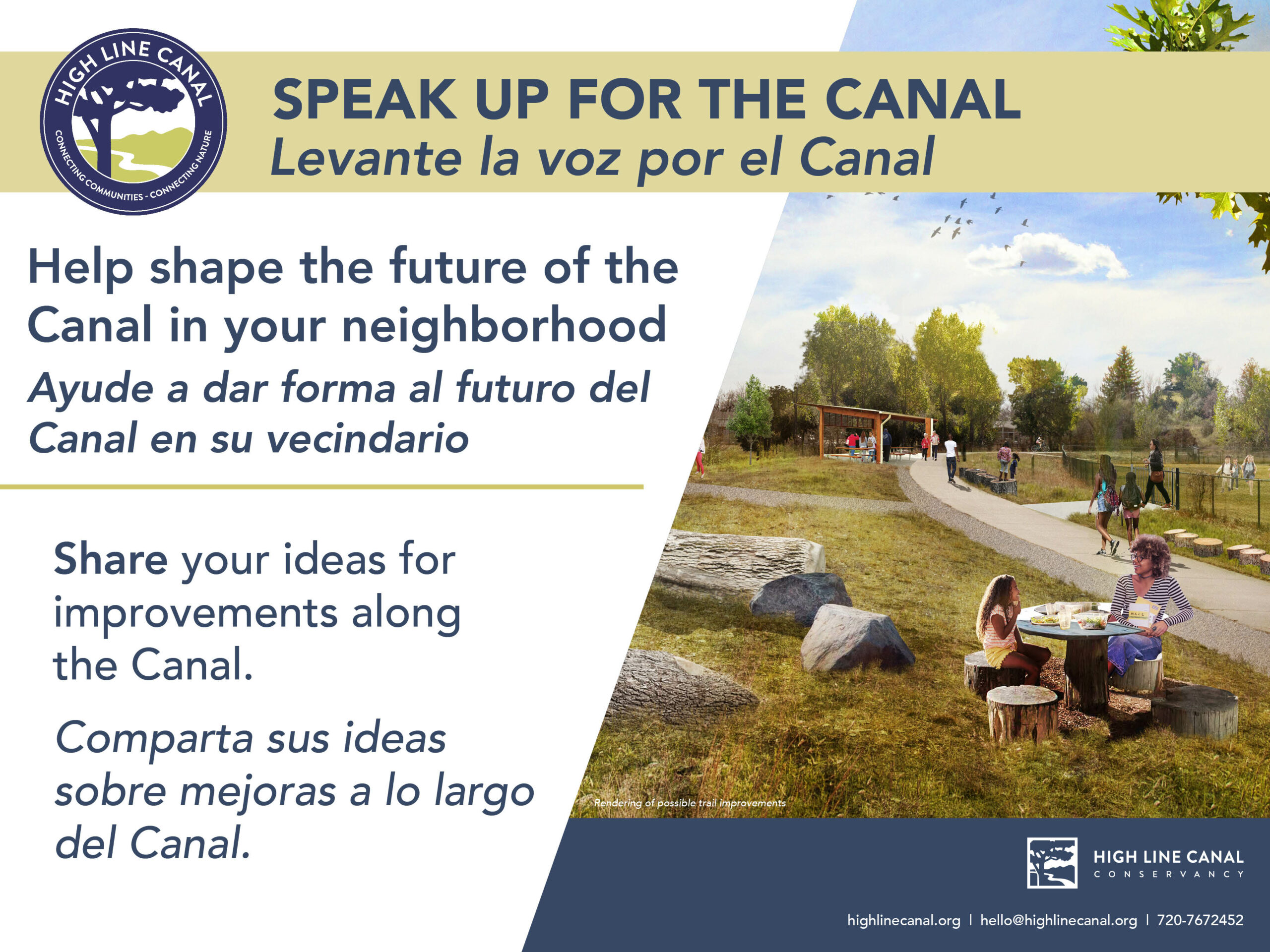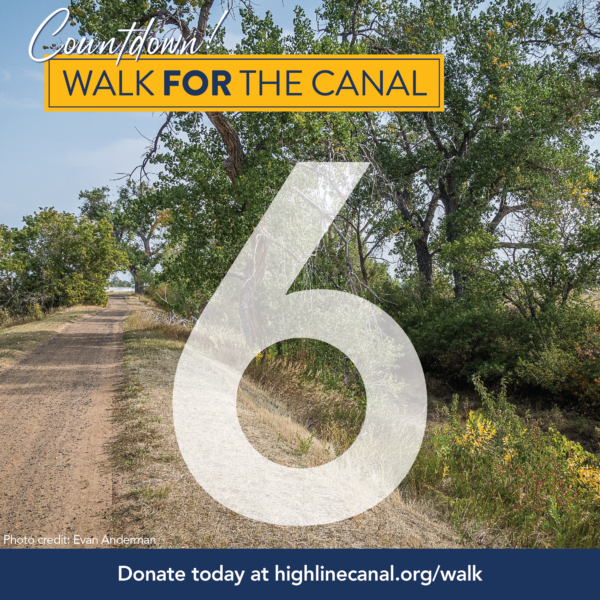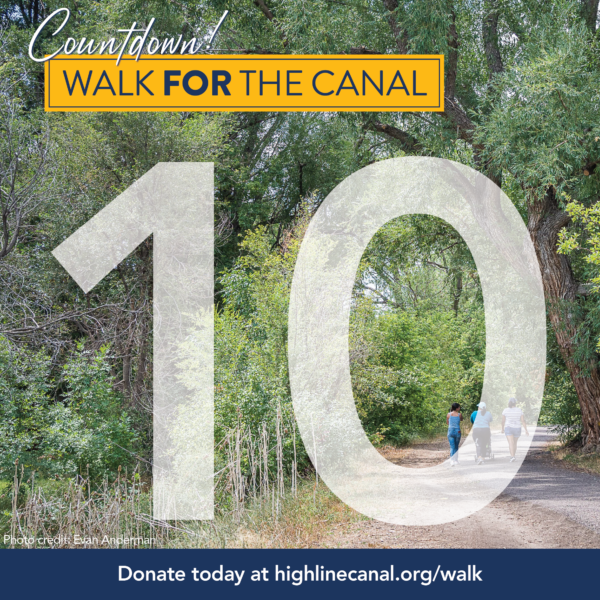Conservancy
Frequently Asked Questions
The High Line Canal Conservancy (Conservancy) is a nonprofit 501(c)(3) tax exempt organization.
No, the Canal is owned and operated by Denver Water. They currently intermittently operate the Canal from the spring through the fall to deliver water to contract holders for South Platte River water.
Currently, the Canal is managed by Denver Water. In addition, each of the jurisdictions has a user agreement (IGA) to maintain the recreational trail portion of the corridor. There are seven agencies with recreation use agreements that are responsible for maintaining the High Line Canal Trail. These agencies are: Douglas County Parks, Trails and Building Grounds Division; Metro District of Highlands Ranch Parks and Open Space; South Suburban Parks and Recreation District; Greenwood Village Parks, Trails and Recreation Department; Cherry Hills Village Parks, Trails and Recreation Department; Denver Parks and Recreation Department; and Aurora Parks, Recreation and Open Space Department. Each of these entities is represented on the High Line Canal Working Group.
Denver Water along with the local jurisdictions have agreed to support the Conservancy as the organization leading the long term planning effort for the future of the High Line Canal. The Conservancy has the distinct role of building community leadership and commitment to preserving, protecting and enhancing the Canal. This public outreach and vision planning effort is its first major initiative. This initiative will provide a vision for the future of the Canal. The Conservancy will coordinate with other stakeholders and the High Line Canal Working Group members on its needs as it plans for and conducts the High Line Canal visioning process. Denver Water, the Conservancy and the partnership jurisdictions all share a common vision to secure the Canal as an asset for the future.
The 100 foot wide swath of land that travels the High Line Canal’s 71 mile reach presents tremendous opportunities for the Denver metro region. With the new reality of water in the West, the Canal has become a costly and wasteful means of delivering water. Denver Water reports that over 80 percent of the water diverted to the Canal seeps into the ground or evaporates prior to reaching a paying water customer. Today’s water scarcity and the leaky nature of the Canal demand reassessment and planning for new uses, while recognizing the important role that the Canal plays as a major recreational resource for the Denver.
Is your question not answered? Learn more at Canal FAQ or contact us.







